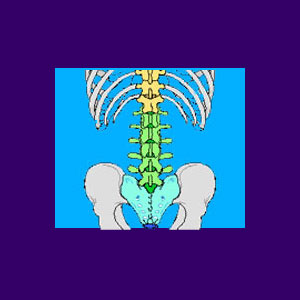
The thoracolumbar spine is the anatomical frontier where the thoracic spinal region meets the lumbar spinal region. This is a place of transition, since the middle back is primary designed for support and protection, while the lumbar spine is designed for incredible flexibility and a diverse range of motion. The thoracolumbar boundary is located at an intervertebral level called the thoracolumbar disc. This is the actual separator between the middle and lower spinal regions.
Structural defects, due to traumatic injury or spinal degeneration, can rarely affect the area of the thoracic-lumbar juncture, as can idiopathic pain issues, including thoracolumbar syndrome.
This essay focuses on the thoracolumbar region of the human vertebral column and its significance in some lower back pain syndromes.
Thoracolumbar Spine Structure
The thoracic spine is noted for joining the ribs, protecting the internal organs and providing a rigid and powerful structure to the torso.
Disc degeneration and spinal arthritis are far less common in the thoracic spinal region, although back injury can certainly occur here if trauma is sufficient to cause structural damage.
The lumbar spine, on the other hand, is the place where disc degeneration and spinal arthritis are almost universal in human adults. The lower back must constantly bend and flex, carrying huge loads of stress which obvious wear down the vertebrae and intervertebral discs as part of their normal lifespans.
Being that the thoracolumbar frontier is where these two drastically different regions come together, this intervertebral level sometimes suffers a marked degree of deterioration or stress in particular patients.
Thoracolumbar Spine Syndrome
Thoracolumbar syndrome, also called posterior ramus syndrome, dorsal ramus syndrome or Maigne syndrome, is a painful condition which is theorized to exist primary due to facet joint issues at the junction between the middle spine and lower spine.
This pain condition is very controversial, since there is no conclusive proof that the thoracic lumbar frontier should suffer any worse degeneration or painful interaction than any other spinal area. Regardless, many patients do indeed have pain at this location and treatment for diagnosed causes of pain in the thoracolumbar juncture continues to grow within the dorsopathy community. Of course, it must be reiterated that many structural abnormalities might exist here due to injury or degeneration, but unless these irregularities are proven to be pathological, they may be purely incidental to the symptomatic expression.
Thoracolumbar Pain Experiences
I am not fond of the diagnostic process for thoracolumbar joint syndrome, as it is very speculative and often employs positive confirmation by anesthetic injection. This practice is incredibly inaccurate and can dull pain from a wide range of possible sources, structural and nonstructural alike.
I have seen many patients wander hopelessly through the back pain treatment system only to eventually come out with a diagnosis of thoracolumbar junction syndrome, often after other diagnostic theories proved to be incorrect.
Therapies for these patients are virtually always useless and few patients report lasting pain relief, pointing to the fact that Maigne Syndrome is probably just another scapegoat diagnosis in many patients. However, in some low back pain sufferers, there are obvious structural issues which can and do cause pain. In these cases, treatment is mostly effective and resolves the complaint, even if invasive back surgery is eventually required.




